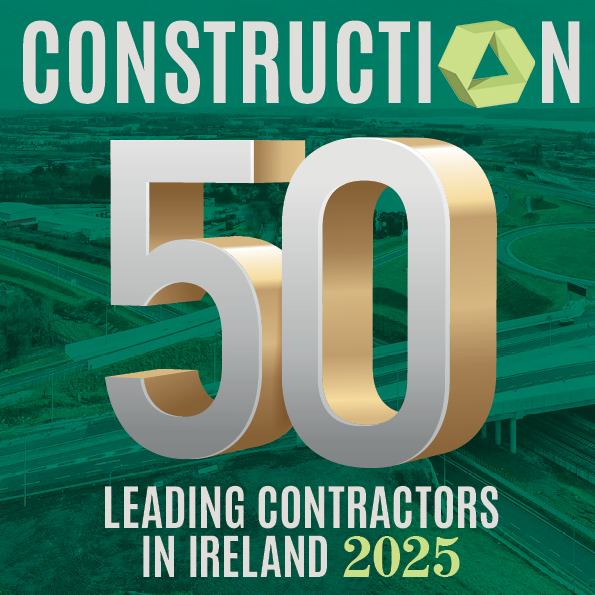Conor O’Connell is CIF Director of Housing, Planning & Development. He considers the outlook of homebuilding for the remainder of 2024
As I write this article for Construction magazine, we are still awaiting news on the extension or otherwise of the Development Contribution Scheme waiver and Water Connection rebate scheme.
It is not an exaggeration to say that this one scheme has facilitated the construction of thousands of new homes by reducing development costs and increasing viability and affordability.
On average the waiver and rebate scheme reduce the cost of delivery by €19,000, a very significant enabler to increased housing supply.
This amount could be the difference, especially in regional areas, of proving the viability of a project to a funding institution. Our own survey earlier this year in conjunction with Irish Institutional Property and Property Industry Ireland, had a response from every single housebuilder and property developer of scale in Ireland.
The results showed that this single scheme resulted in significant additionality to housing supply. Hopefully by the time you are reading, an announcement on the scheme has been made and we can continue to build on the momentum of the increased levels of commencements in 2023.
There have been extraordinary levels of disruption to the determinants of housing supply in recent years.
Issues such as land zoning, infrastructure, planning and funding have all impacted on the delivery and construction of new homes. This is the reason the many different schemes implemented by the Department of Housing, Planning and Local Government as well as other Departments/ Agencies have proved vital to ensuring that the levels of new housing output have increased in Ireland.
This is in stark contrast to the situation in the rest of Europe where new housing supply is decreasing rapidly, at a time when demand has never been greater.
Europe and Ireland is an attractive place to live and work, despite our challenges and it is difficult to envisage any scenario where demand for housing will not continue to grow.
Our colleagues in Build Europe (The European representative body for housebuilders) presented a stark picture to us of the decline in output in European countries when they visited Ireland for their annual convention.
There is clear evidence that the recent collaboration and cooperation between the state agencies, Government Departments and the private sector can deliver.
It has been a strong policy within our housebuilding association (IHBA) not only to advocate and represent housebuilders but also to tirelessly explain at every opportunity how the industry operates and how we can contribute socially and economically to our country.
The many different schemes that have been implemented in recent years such as Project Tosaigh, Croí Cónaithe, STAR, AHB Cost Rental Schemes, Local Authority direct purchase are all beginning to yield results for public housing delivery while the Help to Buy and First Home Scheme are also at record levels of interest.
This cooperation and collaboration must continue as they are clearly delivering. Of course, to continue to deliver more homes for more people, the structural issues facing all types of new housing delivery must now be addressed.
It is vital that we have clear and timebound decision-making processes across a number of areas.
The revision of the National Planning Framework, the review of the National Development Plan, the new Planning and Development Bill, the extra resources for the Planning Court (Division of High Court) and extra resources for An Bord Pleanala must ensure that the supply of new land with infrastructure and planning is addressed urgently.
It is not an exaggeration to state that some of our members are running out of opportunities to purchase land for housing, waiting for planning decisions or awaiting public infrastructure delivery to facilitate new housing developments.
Of course, every housebuilder is in a different position in this regard but too many of our members are reporting cases of delayed activation and delivery due to planning-related matters.
While some commentators will state there are a sufficient number of planning permissions for new homes already granted, many of these are for unviable apartment units that are difficult to fund, units on schemes with a phased development approach, units with limited time left or possibly units that can’t be delivered for infrastructural or other issues.
On the positive front we are hopeful that an upcoming Supreme Court case (Crofton case) will allow for a decision on nearly 22,000 units stuck in An Bord Pleanála, the extra resourcing of our courts will speed up the legal backlog and that in some manner the Revision of the National Planning Framework will allow for a greater housing output and possible interim measures in areas where strict zoning polices are restricting supply.
Hopefully by the time you read this, the ESRI and the Housing Commission will have published their reports which we understand will show we need to increase our housing output to somewhere in the region of 50,000 units.
Of course, the distribution of these new housing units will be where the real debate happens. We must deliver housing where it is needed and, in the tenure, and typologies that are needed.
Sometimes I wonder are we trying to social engineer, through planning policy, aspects of our built environment contrary to the market and what is needed? Planning policy must be economically viable and socially sustainable.
Cost stability and policy stability with decision making timelines are the vital ingredients for housing supply into the future.
Future taxation or regulatory policy must ensure that no new taxation or regulatory measures are introduced that will increase the cost of building new homes.
We are already witnessing some of the unintended consequences of the Residential Zoned Land Tax for instance. In recent weeks and months, a considerable focus has been placed on our capacity as an industry to deliver an increase in the number of new housing units.
Due we have the capacity? Our response remains that labour capacity is only one element of the capacity debate from planning to zoning to funding capacity.
Labour capacity is at the end of the line of capacity constraints but now we have a unique opportunity to harness some of the labour capacity from the commercial sector to the residential construction sector.
As housebuilders we are ready and able to deliver ‘More Homes for More People’ and look forward with optimism to the upcoming decade of delivery.









